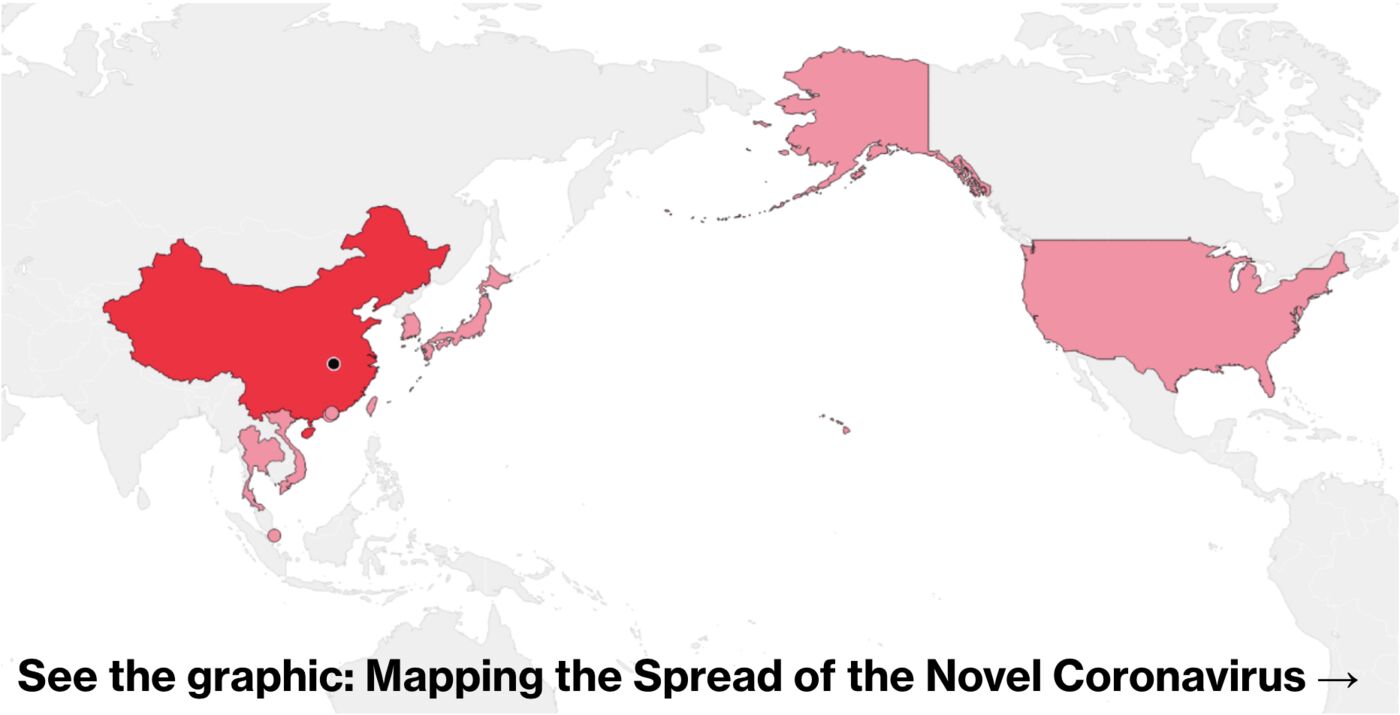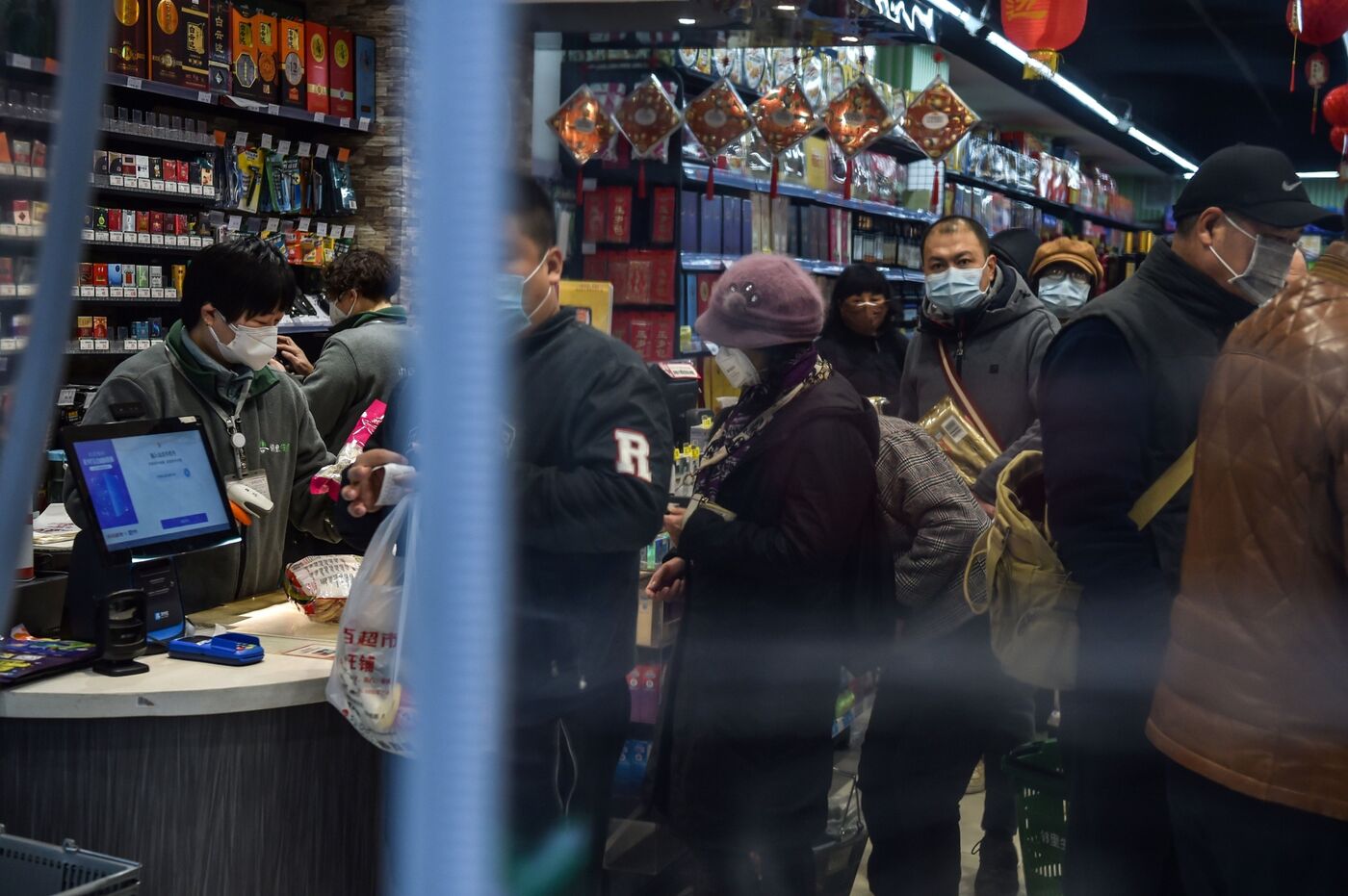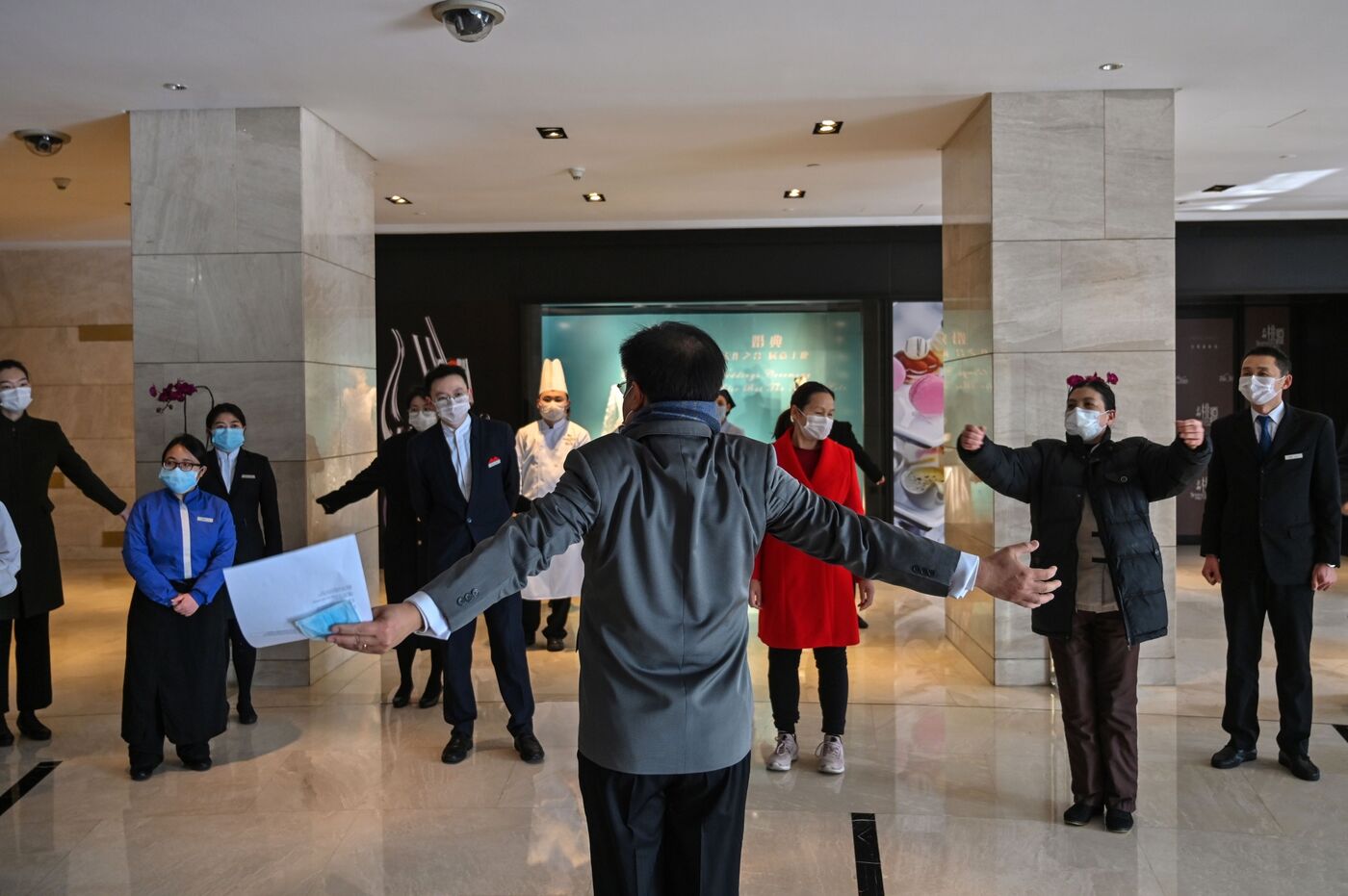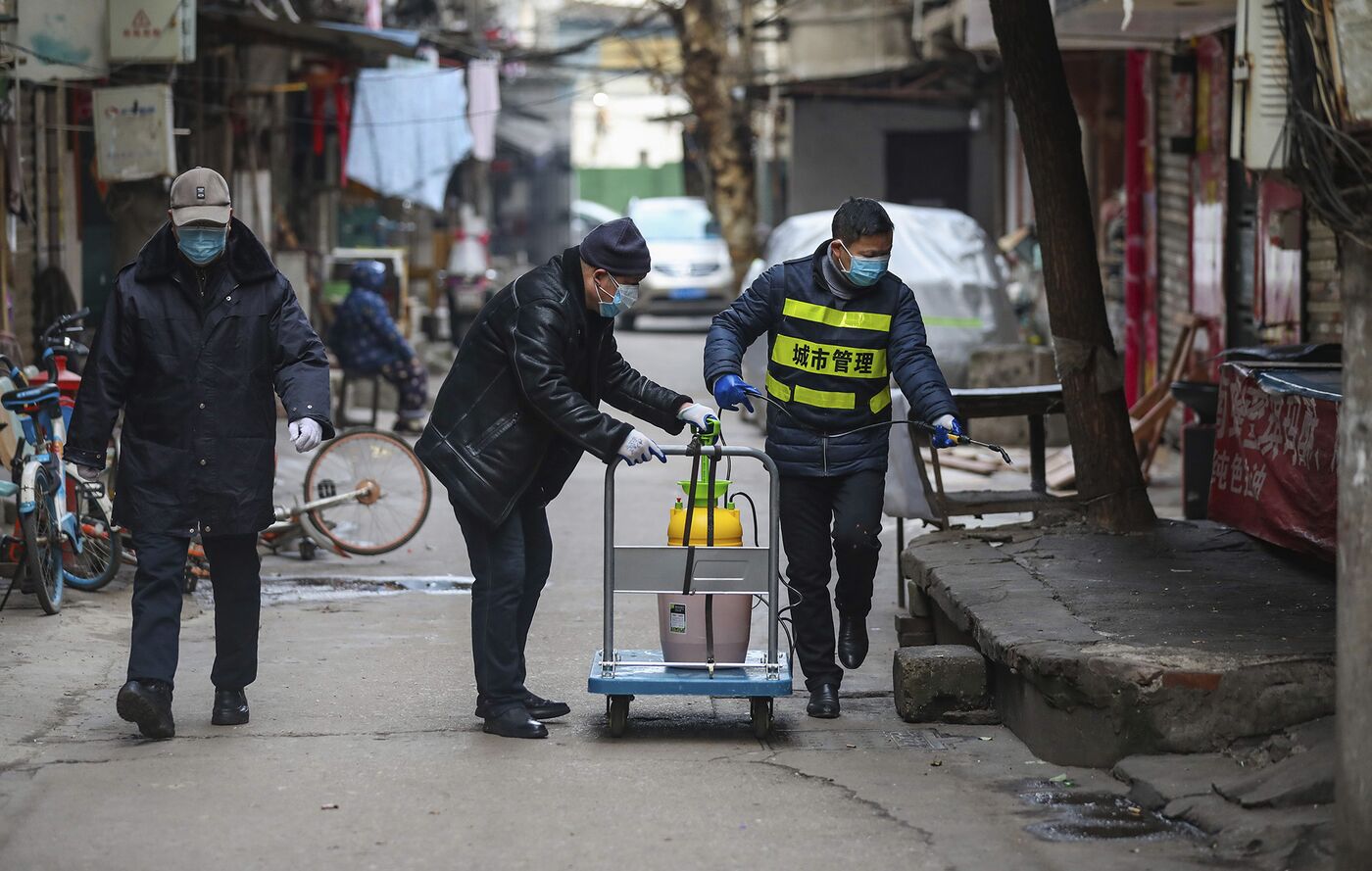25 More Coronavirus Deaths in China, Hong Kong Restricts Travel
By Robert Langreth, Michelle Cortez, and Tim Loh
28 January 2020, 14:17 GMT-7
Updated on 28 January 2020, 15:36 GMT-7
Governments tightened international travel and border crossings with China to try to stop the spread of a coronavirus outbreak that has sickened thousands, and Germany said it had identified a cluster of local patients infected by a woman from Shanghai who had been visiting Europe.
The German cases, which are being closely monitored, appear to be one of the first clusters of transmission outside of China. It’s a worrying sign for public health authorities who have taken aggressive steps to stop what for now has been mostly a Chinese outbreak from becoming an international one.
Hotel workers in protective masks exercise in the lobby during a staff briefing in Wuhan on Jan. 28.
Photographer: Hector Retamal/AFP via Getty Images
The U.S. and U.K. on Tuesday said that residents should avoid all non-essential travel to China, and United Airlines Holdings Inc., the biggest U.S. carrier to the Asian nation, said it would cut flight service after a drop in demand.
Hong Kong announced restrictions on travel from mainland China. It will close some border checkpoints and restrict flights, trains and ferries from the mainland, Chief Executive Carrie Lam said Tuesday. The Chinese government is also suspending visas for visitors to the territory, she said.
The outbreak has rattled global markets and prompted concerns that there could be economic fallout as travel declines and Chinese business is slowed. More than 4,500 people have been infected in China, and at least 125 have died, including 25 deaths announced Wednesday morning.
In Vietnam, a 65-year-old man from Wuhan became sick with the coronavirus four days after arriving in the country and subsequently infected his 27-year-old son who lived there, according to a report in the New England Journal of Medicine. The family had traveled to four cities across Vietnam in planes, trains and taxis, raising concern about human-to-human transmission outside China, according to the report published Tuesday.
And in Germany, three patients were infected by a female Chinese employee of the auto-parts supplier Webasto AG who had been visiting the company’s offices and realized she was sick on her flight back to China on Jan. 23. The patients are being watched under isolation, according to a statement Tuesday night from the Bavarian Ministry of Health.
Government workers spray disinfectant along a street in Wuhan on Jan. 28.
A fourth person who worked at the company had already been diagnosed with the virus. German health authorities said they’re monitoring or investigating about 40 employees who may be at risk, as well as others outside the company.
In the U.S., the Centers for Disease Control and Prevention said it is now screening passengers from China at 20 airports, up from five airports last week. While the CDC considers the risk to the American public is considered low, the precautions are necessary to stop its spread, officials said.
“While it’s possible that some person-to-person spread with this virus may be detected in the United States, the goal of the ongoing U.S. public health response is to contain this outbreak and prevent sustained spread in this country,” the CDC said in a statement Tuesday.
American health officials are also trying to get to the front lines of the outbreak in China to better study the fast-moving pathogen. Health and Human Services Secretary Alex Azar said during a press conference in Washington he has repeatedly raised that possibility with Chinese officials and is hopeful a U.S. team will be let in.
 Empty road in Wuhan on Jan. 26
Empty road in Wuhan on Jan. 26
Photographer: Hector Retamal/AFP via Getty Images
“We are urging China, more cooperation and transparency are the most important steps you can take toward a more effective response,” Azar said Tuesday. He said the Chinese government has been far more open with this outbreak than it was with SARS in 2003, the pandemic that killed almost 800 people.
U.S. officials said they have not been given the opportunity to review data from China that suggested transmission might be possible even in patients who aren’t showing the disease’s flu-like symptoms. Even if there are rare instances of asymptomatic transmission, they’re unlikely to become a major factor in the spread, said Anthony Fauci, director of the National Institute of Allergy and Infectious Diseases.
“Asymptomatic transmission has never been the driver of outbreaks” for any respiratory virus, Fauci said at the press briefing.
The outbreak began last month in the city of Wuhan, the capital of the Hubei province, and has mobilized health officials around the world to try and stop the virus from spreading elsewhere.
Hundreds of construction workers and heavy machinery build new hospitals in Wuhan on Jan. 28
Photographer: Getty Images
China has curtailed travel inside the country and urged people to stay home from work, putting some 50 million people near the outbreak’s center on local quarantines. It’s unclear how successful such measures have been, with a growing numbers of cases across China. Azar said Tuesday that close to half of the recent cases reported in China were outside the Hubei province where the outbreak began.
Other disruptions to
global businesses, travel and the world’s second-largest economy are growing. China has extended the Lunar New Year break to Feb. 2, while companies ranging from Starbucks Corp. to Japanese retailer Uniqlo are shutting sites.









